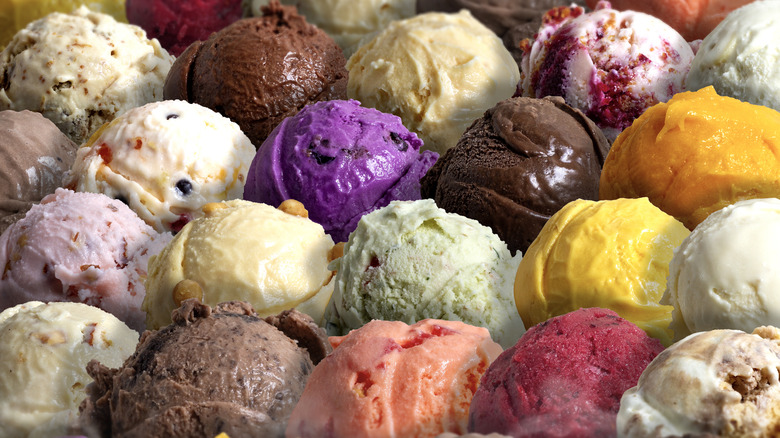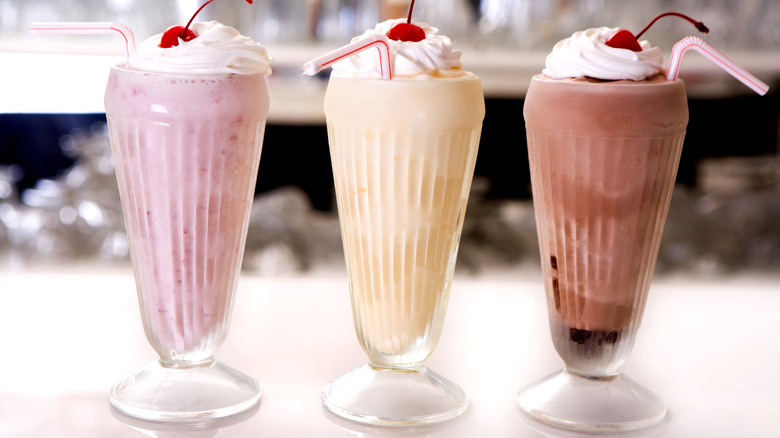The Once-Popular Vintage Ice Cream Treat You Hardly See Anymore
Although now few and far between, soda fountains offer old-time charm in spades. And to best understand their unique old-school appeal, you'll need to sample a malt milkshake. A century ago, this frozen treat was all the rage, spreading across the U.S. in the 1930s. Comprised of malt powder, milk, chocolate syrup, and vanilla ice cream, it's a classic, mouthwatering ice cream flavor — all enhanced by malt's distinctive palate.
For those unfamiliar, malt — short for malted milk powder — is a mid-19th-century invention created for nutritional purposes. It's made from an unusual combination of flour, barley, evaporated milk, baking soda, and a touch of salt. Originally designed for simple dilution with hot water, it soon became clear that the ingredient could make incredibly flavorful desserts. Soda fountain owners discovered its creamy, nutty, and lightly savory notes paired beautifully with both vanilla and chocolate. Then, in 1922, a Walgreens employee made a pivotal breakthrough: serving it all as a frozen milkshake.
At the time, soda fountains and pharmacies operated in tandem, and the ice cream sweet retained a medicinal reputation. Especially during Prohibition, which lasted until 1933, many sought such flavor-packed nonalcoholic alternatives. The frozen treat proved extraordinarily fashionable, cementing the malt milkshake as a quintessential American dessert well into the 1950s and '60s. Served at diners, restaurants, and soda fountains, it took a major shift in dining trends to push the flavor into obscurity.
Malts declined as soda fountains and chains vanished
Today, you can still find a malt milkshake at one of the best old-school diners in the U.S. or a surviving soda fountain. And although malted milk powder remains popular in treats like Whoppers or the occasional baking recipe, it's certainly not part of the cultural zeitgeist it once was — especially when served as a frozen ice cream.
Part of the downturn can be explained by the advent of fast food. In the 1970s, soda fountain culture began to fade as Americans increasingly turned to chains for their sweet, carbonated fixes. Driving culture also contributed to the shift; consumers preferred visiting a drive-thru for a shake or soda rather than walking into a drugstore. Furthermore, starting in the late 1950s, soft drinks began to be distributed in cans and bottles, further eliminating the need for a soda fountain visit. And so, alongside that unique beverage culture, the malted ice cream flavor started to disappear.
The final blow came as fast-food chains shifted attention from malt shakes to other frozen treats. McDonald's hasn't sold a true milkshake in decades, and even chains like Chick-fil-A and Wendy's serve frozen beverages of different compositions. To save costs and increase efficiency, such businesses created proprietary dairy mixes that excluded malt altogether. Today, Dairy Queen still offers malt options, but as the classic ice cream chain continues to close locations, the flavor is only becoming harder to find.


